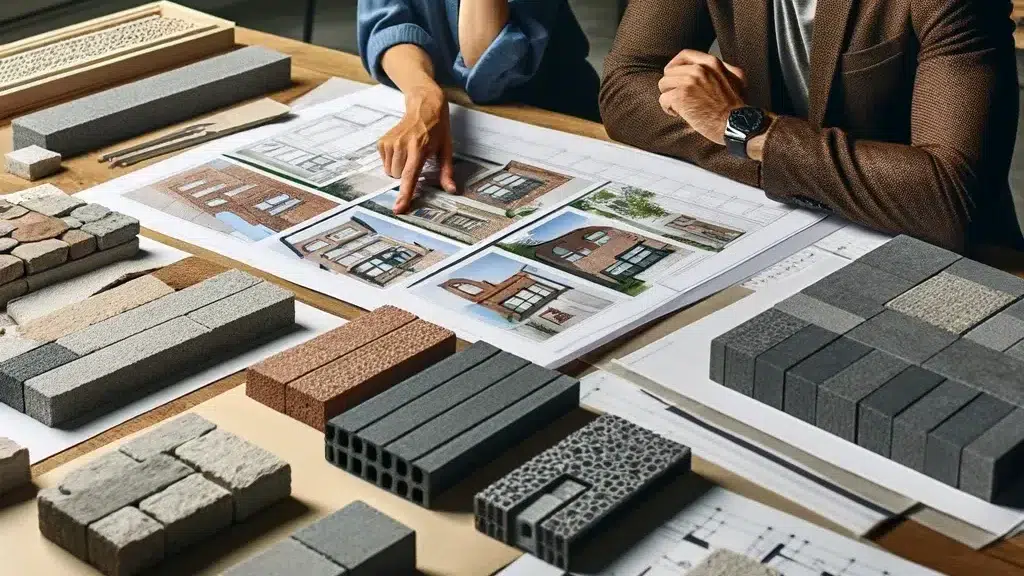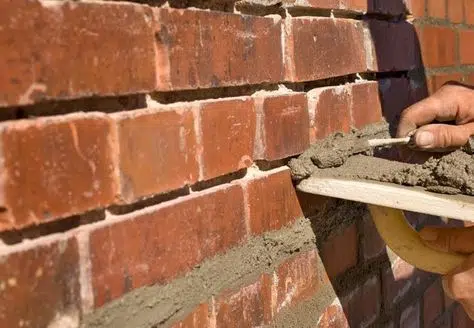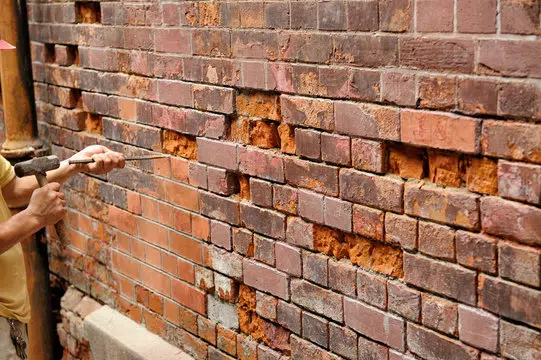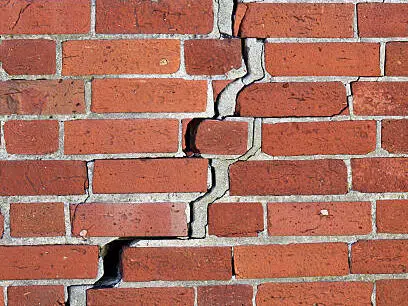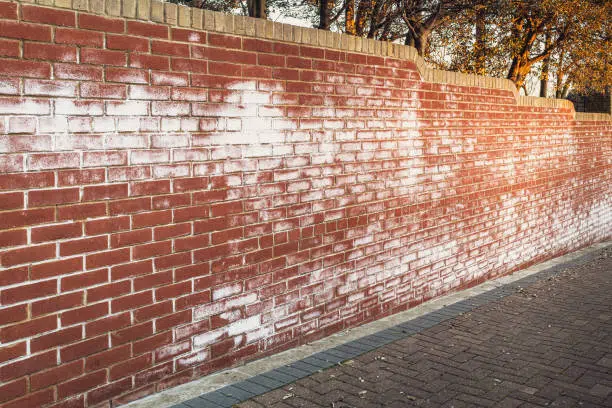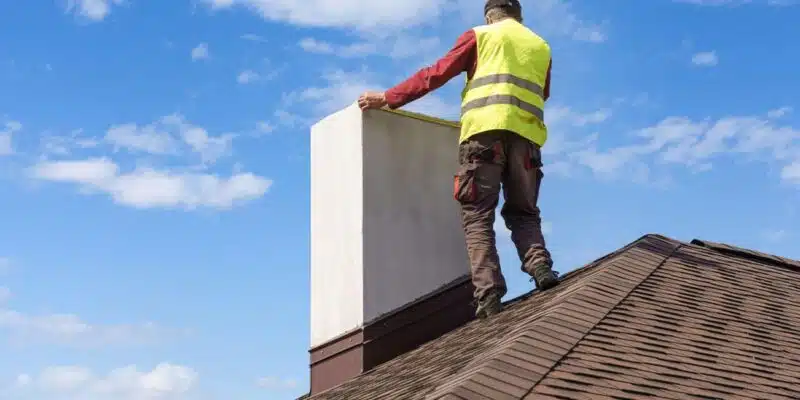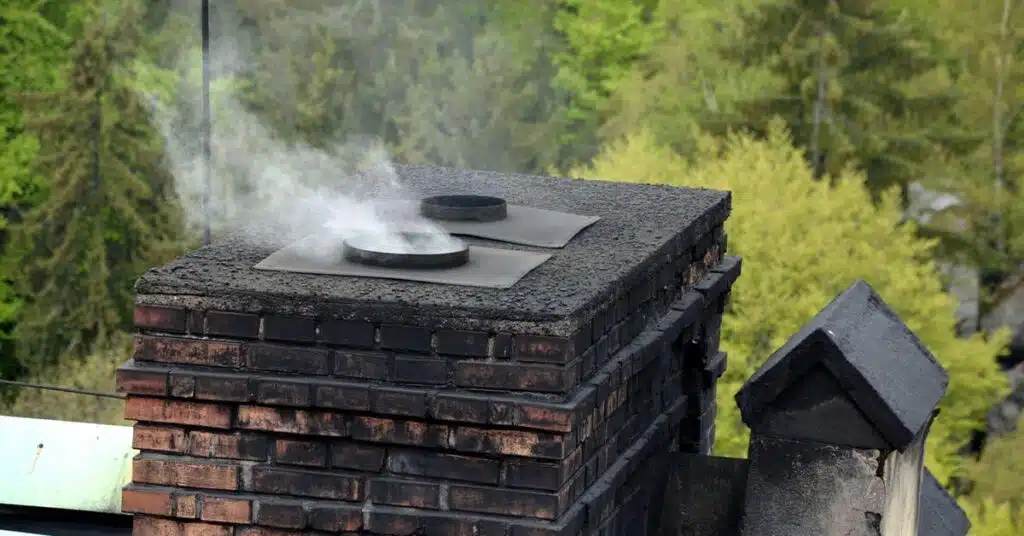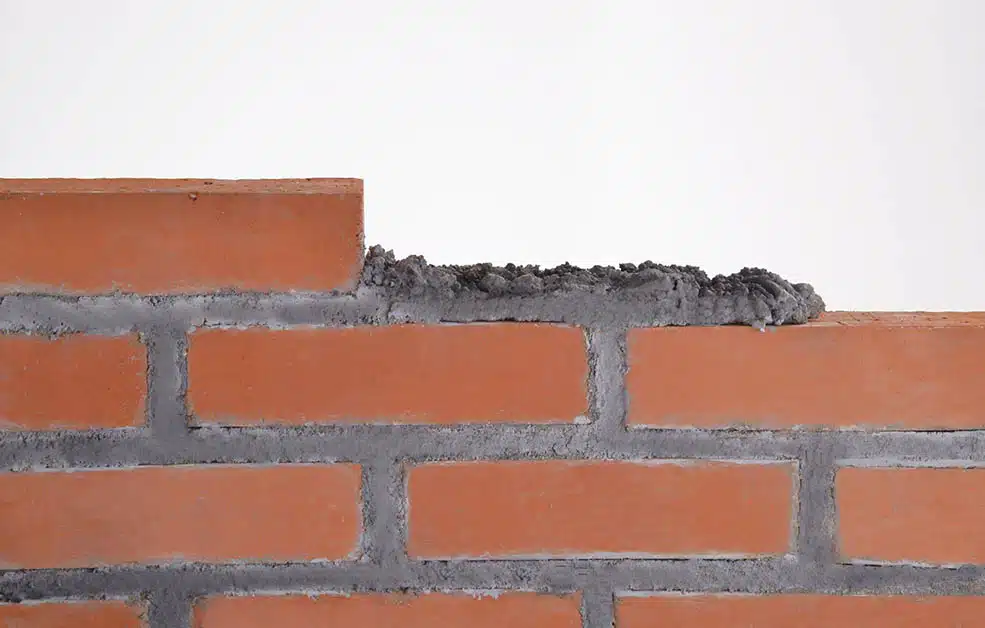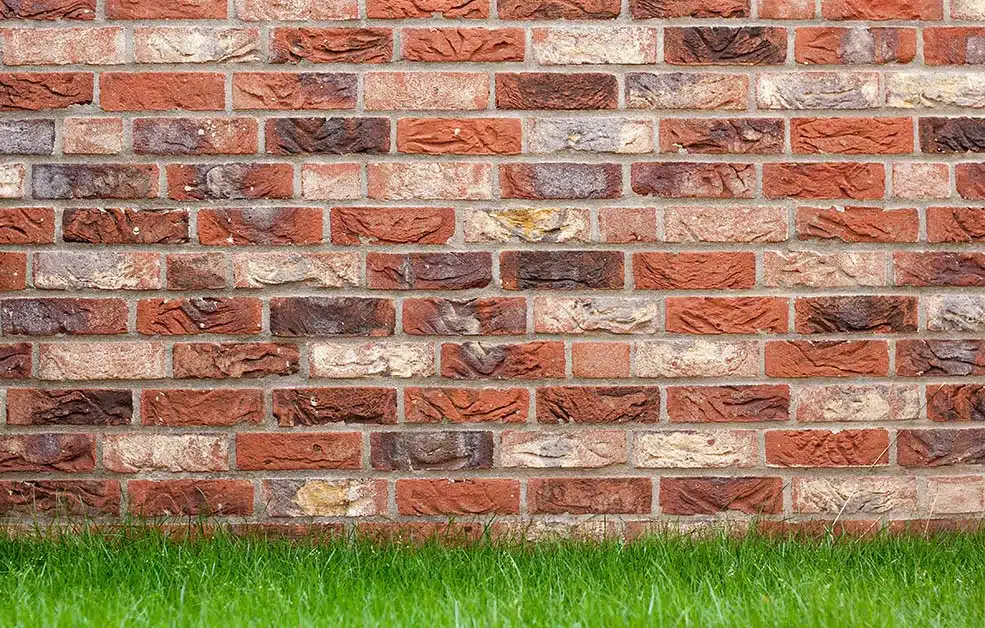Introduction to DIY Masonry Repair and Restoration
Gaining an in-depth understanding of DIY Masonry Repair and Restoration is essential. Here’s a six-step guide to get you started:
- Identify the type of damage.
- Gather necessary tools and materials.
- Clean the damaged area.
- Prepare the masonry mixture.
- Fill gaps or cracks carefully.
- Cure restoration for optimal results.
It’s important to follow the steps precisely. Safety precautions are a must. Wear proper clothing and eye protection when handling equipment and materials. Opt for high-quality materials – they’ll make your repairs last longer. Now you have the knowledge to tackle minor repairs yourself. Don’t miss out on adding value to your home with regular maintenance of your masonry structures.
Preparation for Masonry Repair and Restoration
Before Proceeding with Masonry Repair and Restoration, Make Sure that You Have Completed Efficient Preparation
The key to executing successful masonry repair and restoration lies in meaningful preparation. This includes carefully examining your structure, identifying the underlying cause of the damage, and sourcing the correct materials and tools. By completing these crucial preparatory steps, you can avoid further damage to your masonry and maintain its overall integrity.
Conducting a Thorough Inspection of Your Masonry before Starting Repair and Restoration
Before beginning any work, ensure that you have assessed the extent of the damage to your masonry. Conduct a thorough inspection of your structure, identifying any cracks, gaps, or weakened areas. This will enable you to tailor your repair and restoration efforts to meet the specific needs of your masonry, delivering the most effective results.
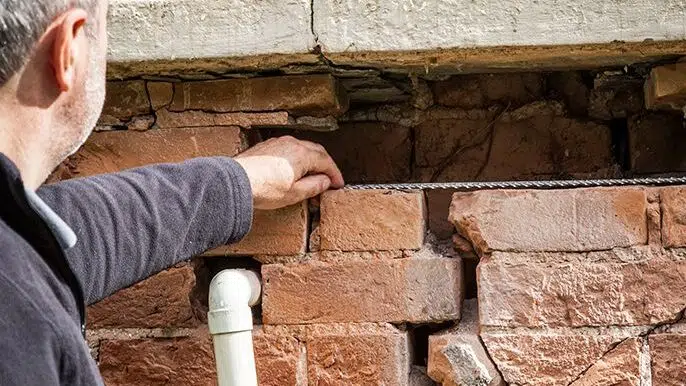
The Importance of Sourcing High-Quality Materials and Tools for Your Masonry Restoration Project
When sourcing materials and tools for your masonry restoration project, ensure that you choose high-quality products that are specifically designed for the job. Using inferior materials can reduce the overall effectiveness of your repair process, resulting in further damage to your structure. Additionally, using the appropriate tools for the job can significantly improve the efficiency and accuracy of your work.
Don’t Risk Further Damage – Start Your Masonry Repair and Restoration Journey Today!
By taking the time to thoroughly prepare for your masonry repair and restoration project, you can ensure the best possible outcome. Don’t wait until your masonry is beyond repair – take action now to protect and preserve your structure for years to come. With patience, diligence, and the right materials and tools, you can embark on a successful masonry repair and restoration journey today!
If you think a crack in your masonry structure is just a minor issue, it’s time to cement your understanding of proper inspection techniques.
Inspection of Masonry Structure
Before repairing or restoring masonry, assessing the condition is essential. An inspection can help spot defects, damages, and deterioration that require urgent attention. This assists in deciding the best approach and methods for repair and restoration.
Attention must be paid to walls, chimneys, archways, etc., for cracks, bulges, and signs of distress. Missing mortar joints and bowing walls are indicators of major structural damage.
The inspection includes:
- Mortar quality
- Presence of moisture
- Cracks in bricks
- Lintel and arch inspection
- Drainage systems
- Corrosion in steel reinforcements
- Staining due to salt buildup
Regular inspections ensure structural stability, prolong lifespan, and prevent future costs. Small irregularities can become costly problems. Scheduled inspections every few years optimize time management for repair projects. Knowing your materials is key.
Identify the Type of Material
Understanding Material Composition:
To repair and restore masonry, it is important to know the material composition. Whether concrete, brick, or stone, the type of material influences the bond strength and durability of restorative products used.
Conducting a lab test can help determine the physical properties, like compression strength and moisture content. This plays a vital role in choosing suitable repair methods.
It is essential to identify any unique features that have been added after the initial construction. This includes cornices or carvings that may have been missed during an initial survey. Assessing these correctly helps select appropriate conservation techniques without changing historical markers.
Studying the composition of materials can reveal how architecture varies from region to region. It can also uncover innovation in architectural styles that can’t be replicated with modern methods.
Before starting masonry repair, make sure you have the right tools! Toothpicks won’t do the job.
Tools Required for Masonry Repair and Restoration
Masonry repair and restoration require key tools for successful and secure results. These include:
- masonry trowels for mixing, spreading, and forming mortar
- chisels to fit desired patterns and sizes
- buckets for mixing mortars
- mason’s hammer for stonecutting
- masonry saws to cut and shape brick/tile/stone
- a caulking gun for filling gaps between materials like concrete blocks.
Protective gear such as gloves, safety glasses, dust masks, and hard hats should also be worn, as this kind of repair exposes workers to falling debris.
Power drills with diamond-tipped bits are useful for drilling holes into brick walls. Investing in good quality masonry repair tools is essential for preventing costly and lengthy damage repairs.
Make sure to have the right equipment ready before starting restoration. The right tools and techniques will guarantee a long-lasting structural integrity. Cleaning up after a party is tough – imagine fixing centuries-old masonry!
Cleaning and Removal of Damage in Masonry
To achieve a professional finish in masonry repair and restoration, it is vital to understand the process of cleaning and removing damage from masonry surfaces. This involves utilizing specific techniques to eliminate any existing damage or debris on the surface.
Here is a 5-step guide to follow when cleaning and removing damage from masonry surfaces:
- Begin by assessing the damage to determine the extent of repair required
- Protect surrounding areas and cover any delicate elements with tape or plastic sheets
- Use a pressure washer or chemical cleaner to remove dirt, grime, and stains from the masonry surface
- For deeper damage, use a chisel or grinder to remove damaged sections of masonry
- Dispose of debris and allow the masonry surface to dry completely before proceeding with any restoration work
For more delicate or intricate masonry surfaces, it is important to use a gentler cleaning approach. Consider using a soft-bristled brush or low-pressure washer, to avoid causing any further damage. Always test any cleaning solutions on a small, inconspicuous area before applying it to the entire surface.
Recently, a historic building underwent major restoration work that included cleaning and repairing the damaged masonry. With the help of expert masons and specialized cleaning equipment, the building’s facade was restored to its former glory. The resulting transformation was stunning and highlighted the importance of proper masonry repair and restoration techniques. Don’t be fooled by the term ‘loose debris’, it’s not like it’s going to blow away on its own – it needs some serious attention.

Removing Loose Debris and Grime
To have a clean and safe masonry surface, it is important to get rid of any debris and grime on it. This is essential for a successful restoration project. Removing these elements prepares the surface for further cleaning and repair work. Here’s a 6-Step Guide to effectively remove Loose Debris and Grime from masonry:
- Put on gloves and clear away big debris such as fallen bricks, mortar, or rocks.
- Use a soft-bristled brush or broom for small dirt particles stuck on the surface.
- If needed, use a pressure washer set at low pressure to clean, without damage.
- Mix detergent with warm water and use in a pressure washer if the brick surfaces are stained or neglected.
- Scrub the affected areas with a soft-bristled brush after applying the solution. Allow time for soaking then rinse with high-pressure water.
- Don’t use harsh chemicals when there’s vegetation around, as they can harm plants and animals.
Keep in mind that you may need extra steps, depending on how long the debris has been there. Speak to a professional about extra measures, so you don’t cause more damage to your property.
Pro Tip: Start with minimal pressure when using high-pressure washers. Increase pressure gradually until you get satisfactory results, while preventing damage to your masonry surfaces. Fixing cracks in masonry is like filling in the gaps in a relationship. Do it right, or it will keep crumbling apart.
Repairing and Sealing Cracks and Holes
Masonry damage? Time to fix up those cracks and holes! Repairing and sealing them stops further damage and keeps the structure standing. Follow these 3 simple steps:
- Clean the area – remove any dust, debris, or residue.
- Fill the gap – use a masonry repair filler.
- Seal the area – apply a masonry sealer over the filler.
Larger gaps might need metal reinforcement rods for stability.
Pro Tip: Use high-quality materials for long-lasting results!
Rebuilding and Replacing Damaged Masonry
To restore the structural integrity of damaged masonry, it is necessary to undertake rebuilding and replacement procedures. This involves the proper identification of the damaged areas and the use of appropriate materials and tools to repair or replace them.
Here is a 3-step guide to help you with rebuilding and replacing damaged masonry:
- Assessment – Inspect the entire structure to identify the nature and extent of the damage. Focus on the mortar joints, as these are the most vulnerable points. Remove any damaged areas and clean the surface properly.
- Preparation – Prepare the replacement material and create a bond that mimics the surrounding masonry. Mix the mortar according to the specifications provided by the manufacturer and apply it on the replacement section before carefully fitting it in place. Level and pack it properly and leave it to dry for the recommended time.
- Finishing – Once the replacement material has dried, clean it properly to remove any residual material. Remove any unsightly marks or stains that might appear on the surface. Finally, apply a coat of waterproofing agent to protect against weathering.
While rebuilding and replacing damaged masonry is a strenuous process, it is crucial to use proper safety equipment, follow specific instructions, and pay attention to the condition of the masonry structure. Failure to do so can compromise the structural integrity of the building.
To ensure a professional finish, consider hiring a trained masonry professional who can handle the intricate details and deliver quality workmanship.
Remember, the key to a professional and long-lasting finish is attention to detail and the use of appropriate materials and tools. By following these steps, you can repair and restore damaged masonry to its former glory.
When it comes to replacing individual bricks or stones, remember: it’s like playing a game of Jenga, but with bigger consequences.
Replacing Individual Bricks or Stones
Rebuilding a damaged masonry wall requires precision and accuracy. Here’s what to do:
- Take a cold chisel and hammer, and remove the mortar around the broken brick or stone.
- Use a flat bar to remove the old brick or stone.
- Clean out any debris from the cavity. Use a wire brush to clean off loose mortar from other bricks or stones.
- Put fresh mortar on the cavity with a pointing trowel. Make sure it fills all gaps before placing the new brick or stone.
- Carefully insert the new brick or stone and press down until it’s snug in the spot.
- Use a pointing tool to smooth and level excess mortar around the joint.
Remember to select replacement bricks or stones that match existing ones in size, color, texture, etc.
Also, wear gloves and safety glasses to protect yourself from any potential injury.
Ah, if only rebuilding life was as simple as rebuilding a wall!
Rebuilding Sections of the Wall or Structure
If a masonry wall or structure is damaged, sometimes it’s necessary to rebuild sections of it. Here’s a 5-step guide to do this efficiently:
- Find out how much of the wall or structure needs rebuilding and what materials are needed.
- Demolish the damaged section while taking care of other nearby structures.
- Get bricks, blocks, stones, mortar mixers, chisels, hammers, cutting blades, and utility knives.
- Rebuild from the base up using mortar mix between layers.
- Clean and seal the surfaces 24 hours after finishing.
Remember to follow safety regulations and consider an expert’s opinion before repairing work. If unsure, consider hiring a professional bricklayer with special tools and knowledge. Don’t let damages go unattended! Start rebuilding today for a secure future.
Finishing Techniques for Professional Results
Achieving a Professional Masonry Finish
To achieve the desired professional finish for masonry repair and restoration, it is essential to know the proper finishing techniques. These techniques can make a significant difference in the final outcomes of your DIY masonry projects. Following the guidelines below will deliver a pleasing and long-lasting finish that will enhance the aesthetic appeal of your home or building.
5-Step Guide for a Professional Masonry Finish
- Clean the surface: Use a high-pressure washer, a wire brush, or a stiff bristle brush to clean the surface. Pay attention to every crack and crevice to remove all dirt, grime, loose mortar, and other debris.
- Repair and Patch: Use a suitable patching compound to fill any gaps, cracks, or missing mortar. Allow it to cure as recommended by the manufacturer.
- Sand and Smooth: Sand the repaired surface once the patch has dried, using a sandpaper with 180-grit or higher. This will level any unevenness and create a smooth surface.
- Apply Finish Coats: For a natural finish, use a mortar-based mix for the final coats. For painted finishes, use a suitable paint or coating. Apply the finish coats with a hawk and trowel, following the original pattern.
- Cure and Seal: Allow the surface to cure completely before sealing it. Use a sealant that matches the finish to protect it from water and other elements.
Essential Tips for Professional Masonry Finishing
Applying a final coat to the repaired surface while wet will lead to bulges and bumps on your masonry surface. This can make your masonry patch look unsightly and unprofessional. Therefore, be patient and allow each coat to cure completely before moving to the next one.
A True Story of Masonry Restoration
John, a DIY enthusiast, attempted to repair his home’s masonry wall to save money. He patched the holes with mortar and painted over them. However, within a few months, the paint flaked, and the patched areas began to crumble. Disappointed with the results, he hired a professional masonry repair service who had to strip the paint, redo the patching, and apply a new finish. John learned that proper preparation, patching, and finishing were crucial for a long-lasting and professional look.
Remember, the right mortar mix can make or break your DIY masonry project, so choose wisely and mix thoroughly.
Applying the Appropriate Mortar Mix
When selecting the right mortar mix for your finishing techniques, there are several factors to keep in mind. These include types of bricks or blocks, location, weather conditions, and the required finish.
Table 1 below provides some common mortar mixes for various conditions and finishes. Each column is labeled with a factor to consider when picking the right mix.
| Mix type | Brick/Block type | Location | Weather Conditions | Finish |
|---|---|---|---|---|
| Type N mortar mix | Standard brick, Block | Indoor & outdoor | Moderate weather | General purpose tuckpointing |
| Type S mortar mix | Stone, interlocking bricks | Outdoor, below-grade | Cold weather | Structural masonry |
| Type M mortar mix | Stone, concrete blocks | Outdoor, above-grade | High wind, earthquake-prone areas | Heavy loads and foundation walls |
It’s important to follow manufacturer instructions for mixing and application carefully. And remember: safety first!
Mortar mix has been used since Roman times, when lime, sand, and water were the most prevalent building materials. Nowadays, cement-based mixes are more popular, as they reduce construction time and provide greater strength.
For perfect color and texture matching, use these tips!
Matching Colors and Textures to Blend Masonry
Creating a unified look with masonry takes careful attention to matching colors and textures. Consider the structures and materials surrounding your project when selecting a blend. A seasoned mason can help blend new masonry with existing structures for a smooth finish.
Picking the right materials is key when doing a project with different surfaces, for example, brick and stone. Uncover similarities between the surfaces to make it easier to match shades and textures. Use samples of existing materials to get exact color matches.
Don’t forget about elements such as sunlight, shadows, and angles when blending masonry finishes. These things affect how colors look in different settings. Analyze these factors in relation to your desired result before beginning the project.
Our Masonry Pros suggest looking into all elements of matching colors and textures for blending masonry, including surrounding structures and hidden elements that could impact your project’s end result. Keep brickwork looking neat with proper care and maintenance, because crumbled masonry is a disaster for any professional.
Maintenance and Care for Masonry
Masonry Upkeep and Maintenance: Regular masonry maintenance goes a long way in preserving the strength and longevity of your structure. Keep an eye out for signs of wear and tear, such as cracks, leaks, and loose mortar.
To maintain the health of your masonry, ensure that it is free of water damage and moisture, as this can lead to structural issues over time. Additionally, regularly clean the surface to prevent dirt and grime buildup, which can cause discoloration.
It is essential to check for any vegetation growth on the masonry, as this can cause cracking and damage to the structure. Furthermore, ensure that any repairs or restorations to the masonry are done by a professional to ensure the best results.
There have been cases where improper maintenance and care of masonry structures has led to severe damage and costly repairs. For example, neglecting to address water damage on a structure can result in crumbling bricks and weakened foundation. Don’t neglect your masonry or it might crumble faster than your sense of humor at a dad joke convention.
Importance of Regular Maintenance
Maintaining masonry is essential to keep it strong and looking good. It can save you money on repairs and replacements, and keep you safe from hazardous conditions. If neglected, it’ll only deteriorate further, making it hard to repair.
To keep your masonry in tip-top shape, do periodic inspections for cracks, erosion and weather damage. Also, get rid of vegetation near it as it can cause harm over time. Use proper cleaning methods during regular cleaning to avoid any risk.
If needed, hire a professional for better quality care or for fixing structural issues. Doing this regularly will help your property stay structurally sound and attractive.
Maintaining masonry the right way and consistently will make sure it stays in good condition for years. So don’t let it crumble like your self-esteem after a break-up!
Tips for Keeping Your Masonry in Good Condition
Safeguarding your masonry’s quality is essential for its duration and looks. Here are a few tricks to make sure your masonry stands the test of time:
- Check your masonry regularly for any wear or damage.
- Make sure downspouts, gutters and drainage systems are working correctly to avoid water damage.
- Use suitable cleaning techniques and substances to get rid of dirt, stains and pollutants.
- Fix any splits or breaks immediately to prevent further damage.
- Contact professional services each year for a more thorough inspection and maintenance.
Apply waterproofing compounds on your masonry to guard it from the elements. This will stop moisture infiltration while still letting it breathe. Plus, be conscious of any nearby trees or plants that could cause obstruction or other kinds of destruction.
Recall that proper upkeep is the key to stretching the life of your masonry. By taking proactive measures now, you can save yourself from costly repairs in the future.
Start today by arranging a meeting with a professional mason who can give you personalized advice for maintaining and caring for your special type of masonry. Don’t wait until it’s too late!
Remember, overlooking your masonry is like overlooking your ex – it may seem like a great idea at the time, but in the end, you’ll wish you hadn’t.
Conclusion
Confidently tackle masonry repair and restoration projects after considering various tips and techniques. Have the correct tools to get a professional finish. Take note of the mortar type – it’s essential to preserve your masonry. Inspect your masonry regularly for detecting damage early.
Prior to undertaking major repairs or restorations, always ask an expert for professional advice. Safety must be a priority – wear protective gear while working.
Beware! Improper use of cleaning agents can damage your masonry. Certain acidic cleaners can corrode stone or brickwork if not used correctly. Before using on the entire surface, read manufacturer instructions carefully and test the cleaner on a small area.
Frequently Asked Questions
- Can I repair my own masonry without professional help?
- Yes, with the right tools, materials, and knowledge, it is possible to repair and restore your own masonry. However, it is important to have a good understanding of the process and safety precautions to take before starting any projects.
- What are some common types of masonry damage and how can I fix them?
- Common types of masonry damage include cracks, chips, and spalling. To fix cracks, you will need to use a masonry crack filler and follow the manufacturer’s instructions. For chips and spalling, you will need to mix and apply a patching compound to the damaged area.
- What materials and tools do I need for masonry repair?
- You will need materials such as masonry cement, patching compound, and a waterproofer. Tools necessary may include a trowel, hammer, chisel, wire brush, and safety equipment such as goggles and gloves.
- Can I restore the color and texture of my masonry?
- Yes, there are special products available for restoring the color and texture of masonry. You will need to choose a product that matches the existing color and texture of your masonry to achieve a professional finish.
- What safety precautions should I take when doing masonry repair?
- Before starting any masonry repair projects, it is important to wear safety equipment such as goggles and gloves to protect your eyes and hands. You should also work in a well-ventilated area and be mindful of any potential hazards such as uneven surfaces or loose debris.
- How do I maintain my newly repaired masonry?
- To maintain your newly repaired masonry, it is important to regularly clean it using a pressure washer and mild detergent. You may also want to apply a waterproofer to help protect it from future damage.


